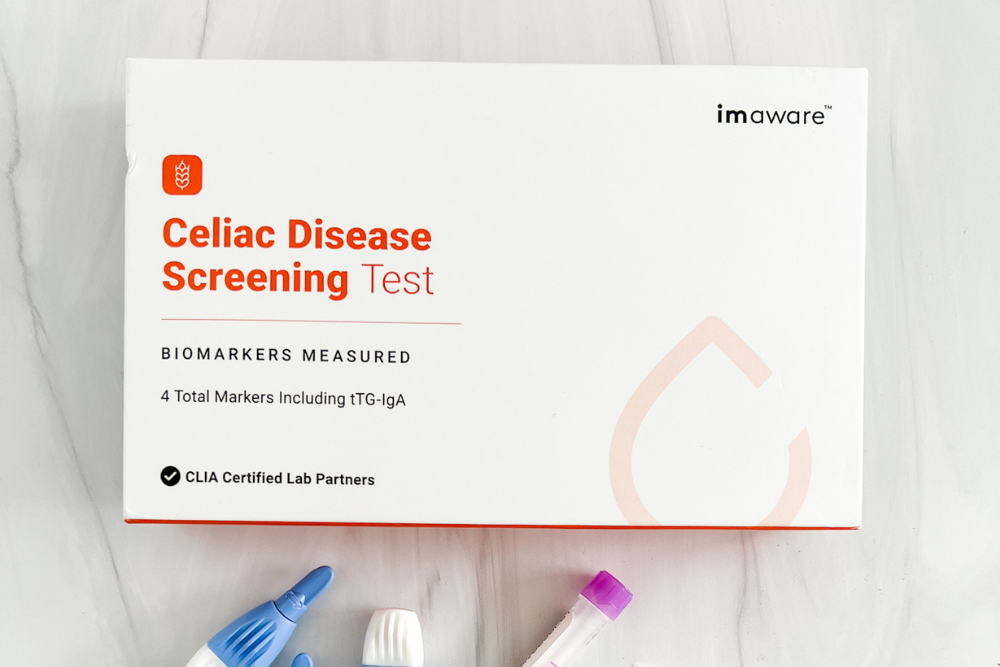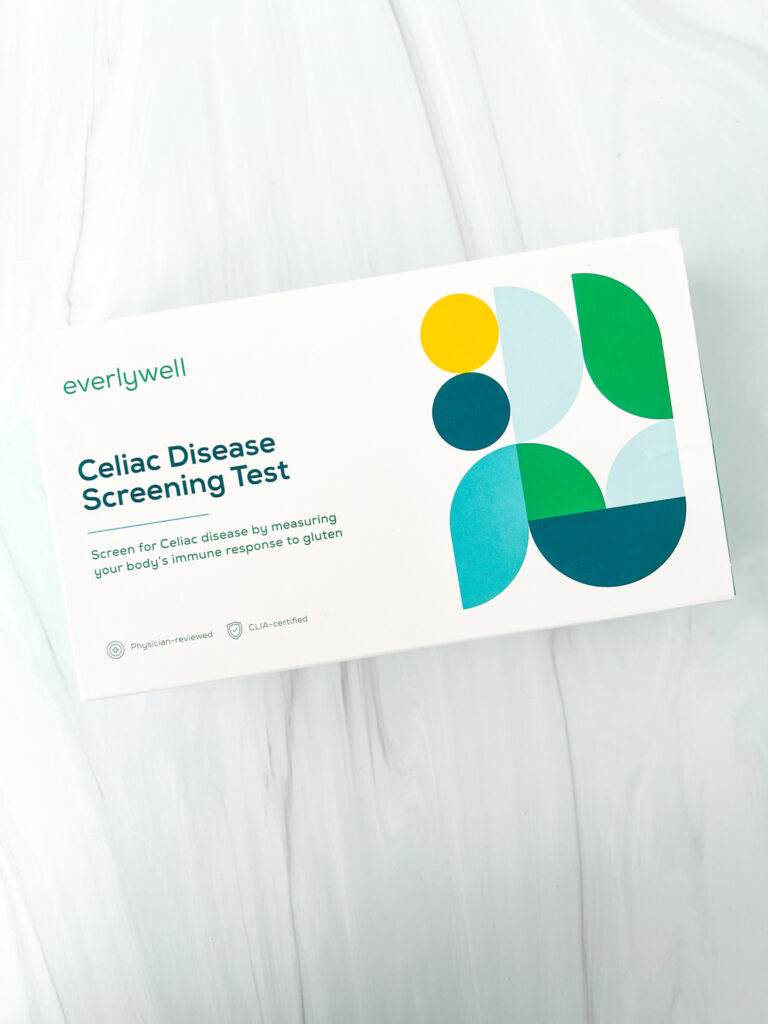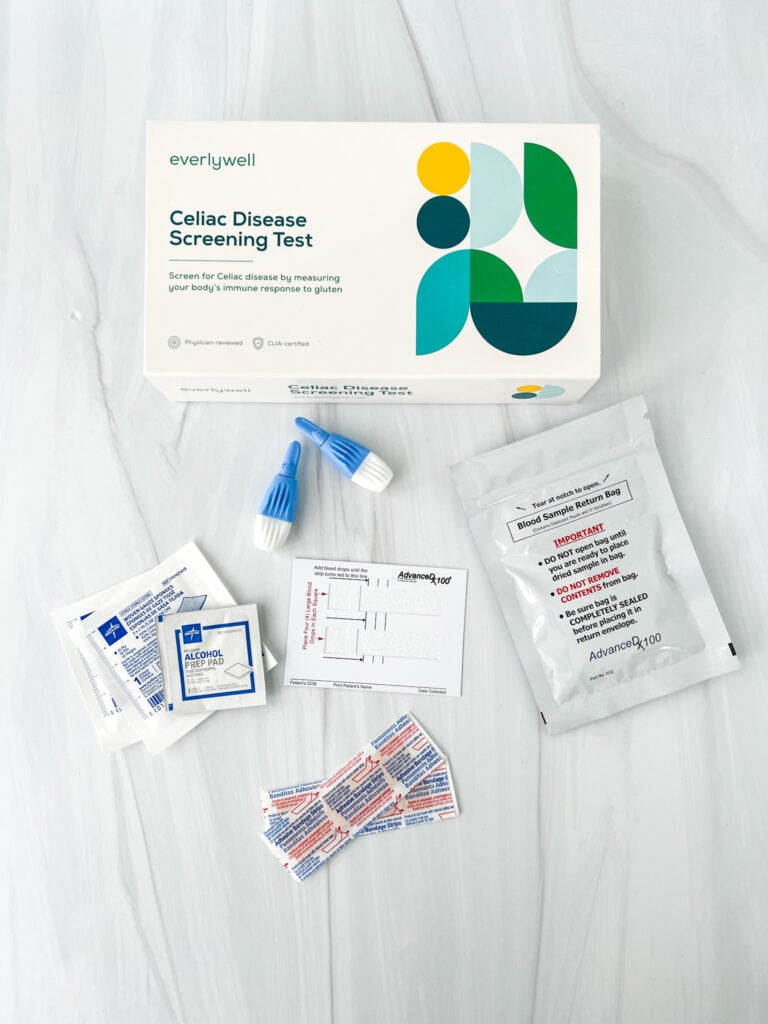
This post discusses how you can self-screen for celiac disease using an at-home celiac test and which at-home celiac disease test is most reliable. This post contains affiliate links. Please see my disclosures.
Celiac disease is one of the most underdiagnosed diseases in the world. It affects one percent of the population, yet 97 percent of people with the disorder don’t know they have it, according to the Celiac Disease Center at the University of Chicago.
Celiac disease is an autoimmune disease in which the body mistakenly attacks the healthy tissue surrounding the lining of the small intestine every time someone eats gluten, a protein found in wheat, barley, rye, and sometimes oats.
Today, anyone can self-screen for celiac disease, which is essential to catching the disorder before it causes damage, painful symptoms, and even irreversible symptoms. This is especially true for anyone with a first-degree relative with celiac, as someone with a sibling, parent, or child of someone with celiac disease has a much higher risk of having the disorder.

At-Home Celiac Tests
Getting tested for celiac disease is easier than ever, and you can do it at home with a simple finger prick. The benefits of at-home celiac disease testing include the following:
Convenience – No doctor visits or time off of work. A test kit will be sent to you by mail. Collect a small blood sample and mail it to the lab. In a few days, the company will email you the results.
Less Money – While you must pay out of pocket for an at-home celiac test ($119), there are no expensive doctor’s visits, co-pays, or lost wages due to taking time off work.
Accuracy – An at-home celiac test is as accurate as any test you’d get from your doctor’s office. In fact, this at-home celiac disease test screens for four key biomarkers used to diagnose celiac disease: DGP IgG, tTG IgG, DGP IgAt, and tTg IgA. You can learn more about these biomarkers in my article, What to Expect When Getting Tested for Celiac Disease (Blood Test and Endoscopy).
It’s Legit – The results are from a CLIA Certified Lab-certified and physician-reviewed before they are presented to the patient. Your doctor will not need to repeat this test; he or she can simply review the report with you.
No Blood Draw Needed – The Everlywell at-home celiac test requires only a finger prick and the collection of a small blood sample. No lab blood draw is needed.
Where to Buy an At-Home Celiac Test
Purchasing an at-home celiac test online is easier than ever, and a company called Everlywell is leading the charge.
An at-home celiac test costs $119.
Once you get the test kit, collect your sample, send it back in the prepaid envelope, and within a few days, you’ll receive the full test results in your email and on the company’s online dashboard.

A Few Notes to At-Home Celiac Testing
Below are a few important details to remember before ordering an at-home celiac test.
You Must Be Eating Gluten – For the at-home celiac test to be accurate, you must be eating gluten. If you’re on a strict, gluten-free diet, you may want to consider taking the Gluten Challenge or undergoing genetic testing before taking any celiac disease test.
If Your Test is Positive – If your test is positive, you should discuss the results and get your doctor’s “official” diagnosis. Your doctor may require you to undergo an endoscopy/biopsy and further screening. A positive celiac test indicates that you have the disorder and should prompt further investigation.
If Your Test is Negative – If your test is negative, it’s unlikely that you have celiac disease. However, discuss further testing options with your doctor if you have persistent symptoms.
Some doctors will want to perform an endoscopy to biopsy your small intestine, which is the gold standard diagnosis. Doctors are looking for small intestine damage consistent with celiac disease patients.
If symptoms persist, you may also want to explore non-celiac gluten sensitivity testing, food intolerance testing, and other medical tests and conditions.
Remember, if you test negative for celiac disease now but later develop symptoms, or if you have a genetic predisposition to celiac disease, you’ll want to get screened for celiac disease regularly. Celiac disease can turn on at any time and is often dormant until triggered. Read more about What Causes Celiac Disease.
Who Should Take the Test? – If you have any digestive issues, unexplained migraines, fatigue, skin disorders, joint pain, anemia, or other non-classical celiac symptoms, you should take the test and rule out celiac disease before implementing a gluten-free diet. Remember, you must be eating gluten for a celiac disease test to be accurate.
You should also take the test if you have a first-degree relative with celiac disease. Siblings have the highest chances of having celiac, followed by children and parents of a patient with celiac disease.
The at-home celiac test is approved for those 18 years and older. However, a celiac disease screening test your doctor performs can be administered at any age.
Where Can I Buy the Test? – You can buy the at-home celiac test online.
Involve Your Doctor – Discuss the results with your physician after taking the test to see if further testing is necessary. Remember, there’s no need for your doctor to repeat the blood test. That is a waste of time and money.
The at home tests are accurate and reliable but you should discuss the test results with your doctor. Only a doctor can “officially” diagnose you. You should also discuss a negative test with your doctor as there may be something else at play. Good luck!
I have never had a test for Celiacs disease. But doesn’t it take a doctor to interpret the results? I have most of the Celiac systems and they have only seemed to have gotten worse as I have aged.